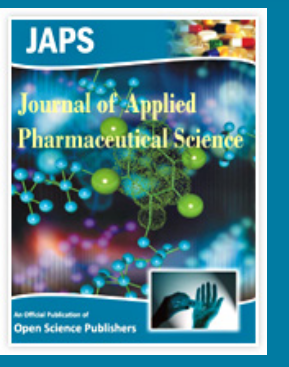
In silico predictive for modification of chalcone with pyrazole derivatives as a novel therapeutic compound for targeted breast cancer treatment

- Jurnal Internasional Bereputasi
- Riska Prasetiawati, Adel Zamri, Melisa Intan Barliana, Muchtaridi Muchtaridi
- Journal of Applied Pharmaceutical Science Vol. 9(02), pp 020-028, February, 2019 Available online at http://www.japsonline.com DOI: 10.7324/JAPS.2019.90203 ISSN 2231-3354
Abstrak
ABSTRACT
One of the most common triggers of breast cancer is over-expression of estrogen receptor alpha (ERα). Long-term
therapy of tamoxifen, an ERα antagonist, can reduce patient’s quality of life because of its side effects. In the previous
study, 2’,4’-dihydroxy-6-methoxy-3,5-dimethylchalcone (ChalcEA) was isolated as an active compound from the
Eugenia aquea leaves that is responsible for breast cancer treatment with positive ERα, however, the potency is lower
than tamoxifen. The aim of this study is to find the best-modified chalcone that binds well with the ERα. Drug design
approaches used in this study were Structure-Based (Autodock 4.1) and Ligand-Based (LiganScout 4.1). Prediction of
absorption, distribution, and toxicity parameters was employed using preADMET and Toxtree. Interactions between
tamoxifen and ERα were determined and the differences in the binding modes between tamoxifen and chalcones were
observed. Modifina3 had pharmacophore fit score value of 76.42% and the molecular docking studies showed the
lowest free energy binding (∆G) of −11.07 kcal/mol while tamoxifen of −10.15 kcal/mol. Modifina3 had absorption
and distribution properties with the percentage human intestinal absorption of 95.90%, CaCO2
of 46.95%, and protein
plasma binding of 93.55%. Toxicity prediction of Modifina3 was categorized in class III and risk assessment requires
compound specific toxicity data. These results suggest that Modifina3 has the potency to be a novel therapeutic
compound for potent ERα inhibitor targeted breast cancer.
Key words:Chalcone, Modifina3, breast cancer, pharmacophore modeling, molecular docking
Lihat Dokumen
